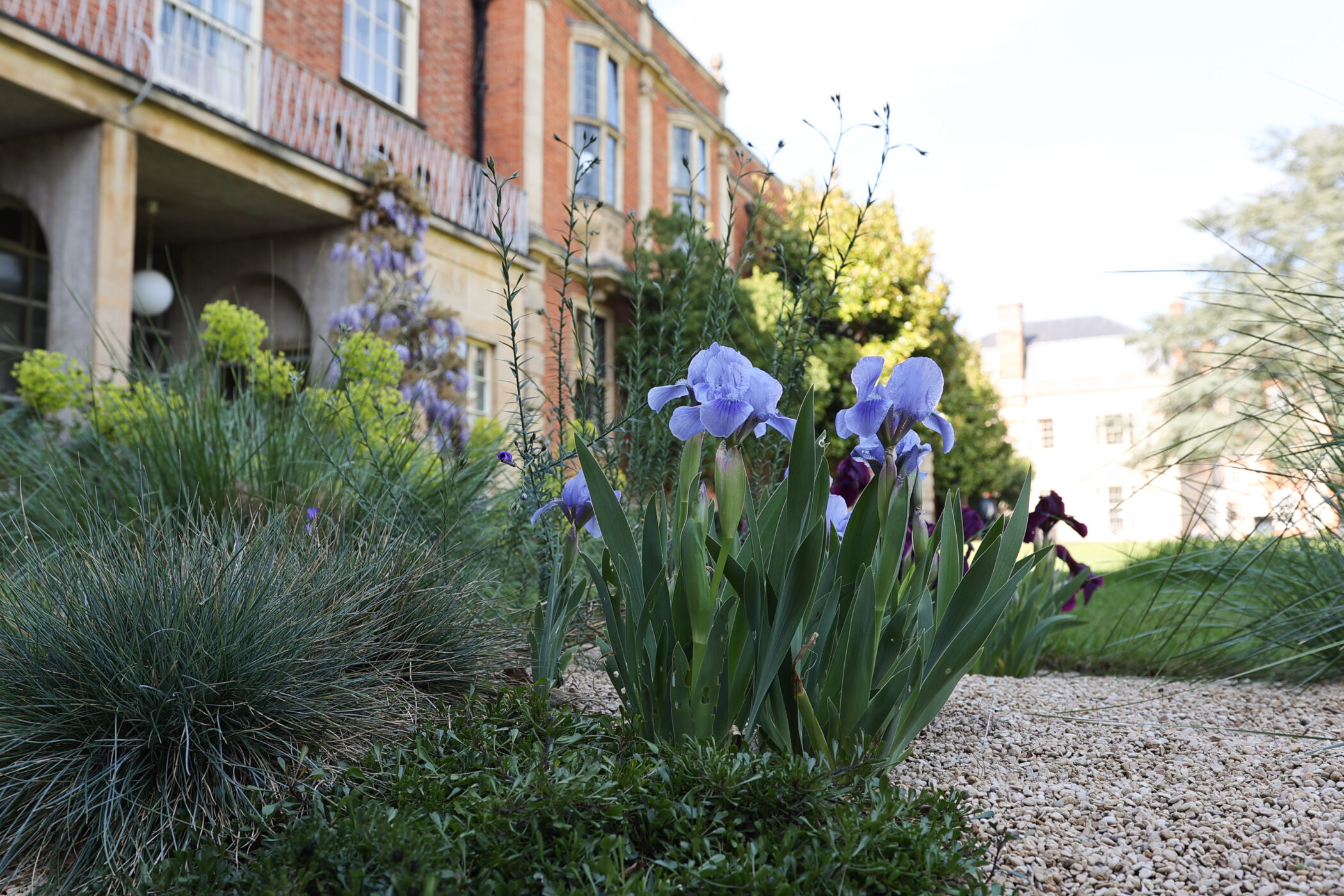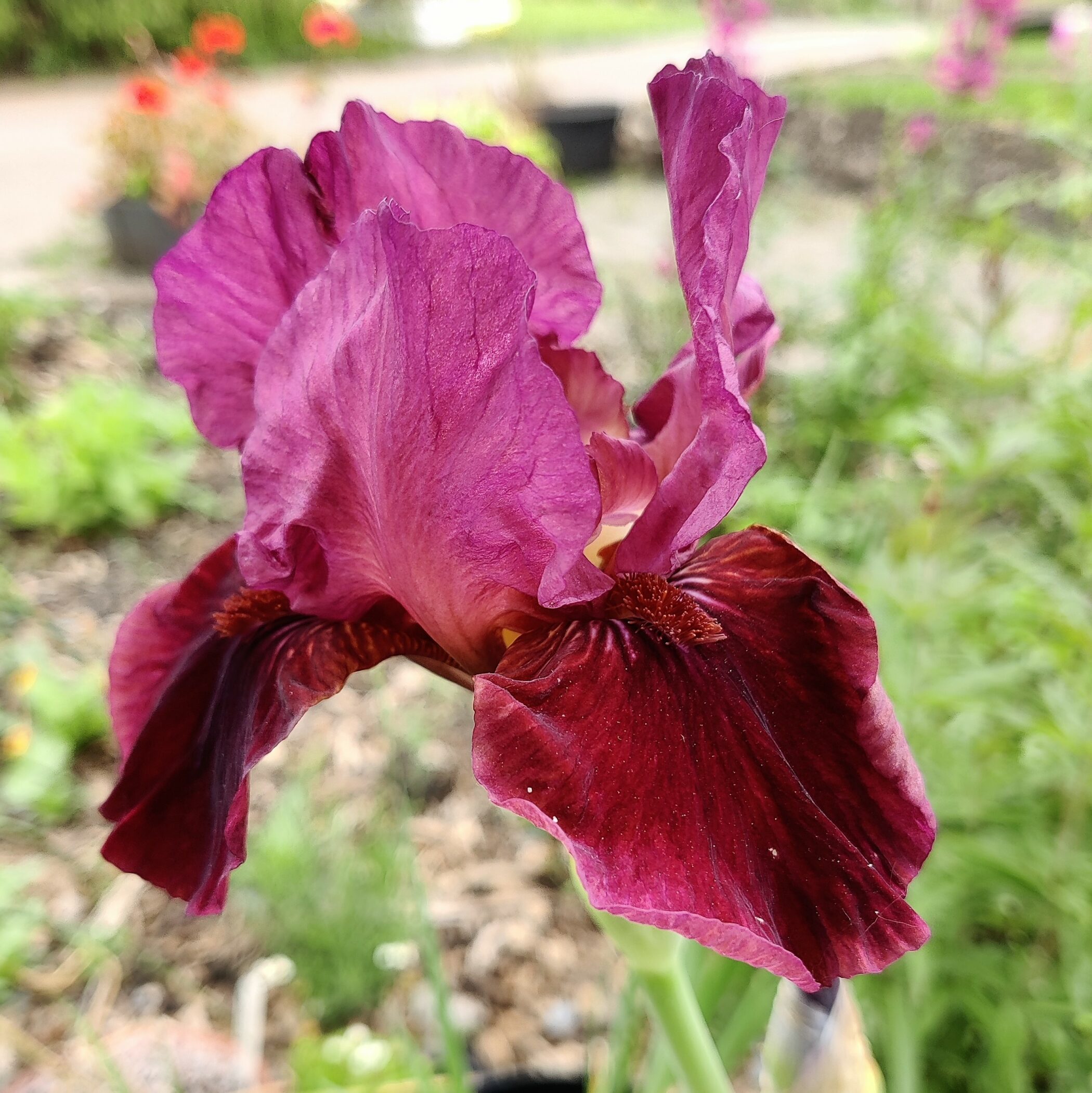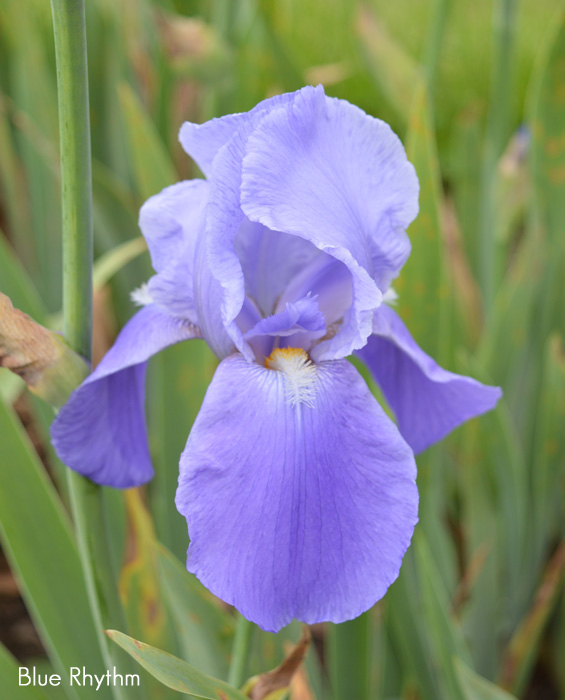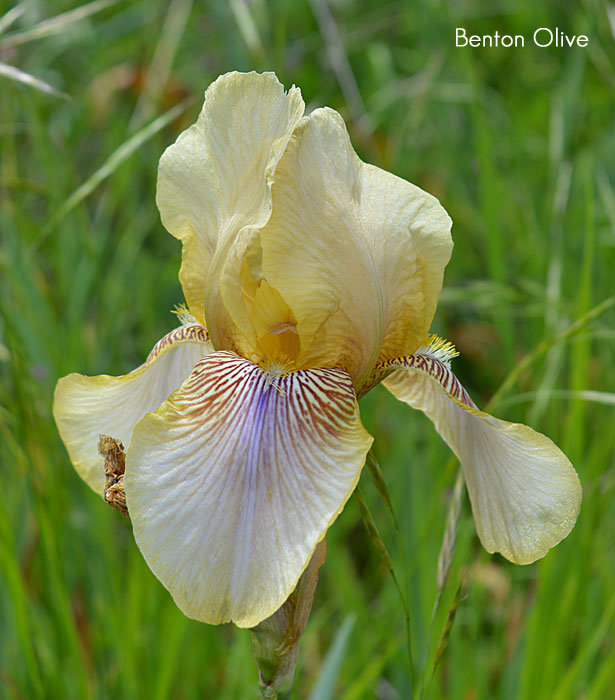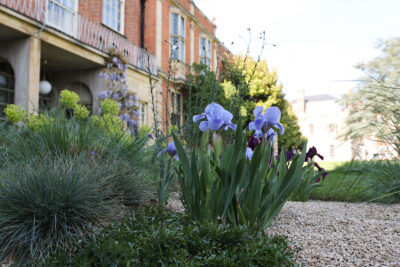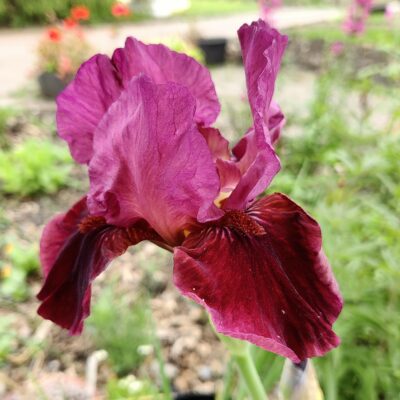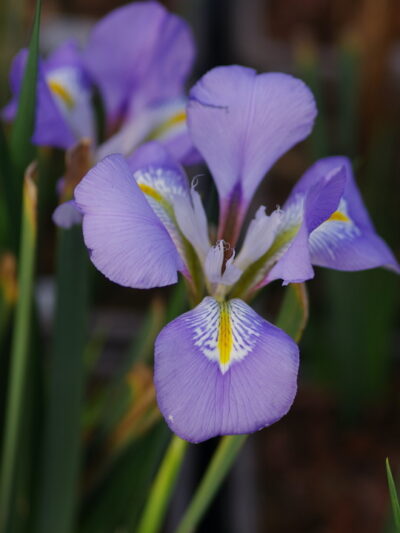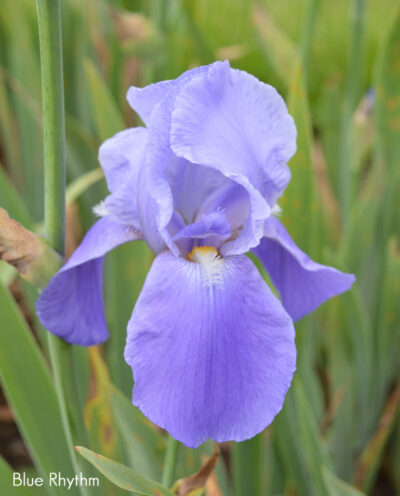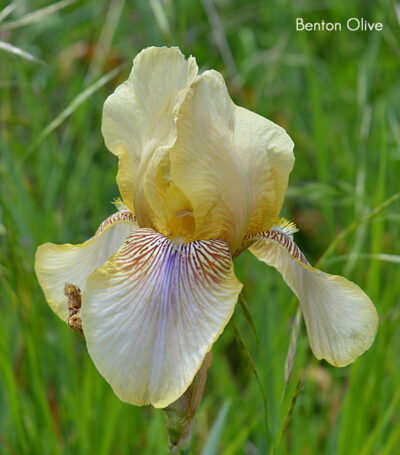For this early summer edition of the gardens blog, Somerville gardener Anna will be talking all about irises.
There are two reasons for this focus. The first is that many of you have approached Alastair and me to talk about our beautiful irises while they were at their prime. The second reason is that we have now gathered quite a significant collection of irises across the College.
Many of you will have spotted the winter flowering Iris unguicularis (Algerian Iris) nestled at the base of Maitland. Others will have noticed the Dutch Iris (Iris xiphium hybrid) popping up in the borders. The eagle-eyed among you may even have enjoyed spotting the bulbous little forms of the miniature iris (Iris reticulata) in the rockery and planters.
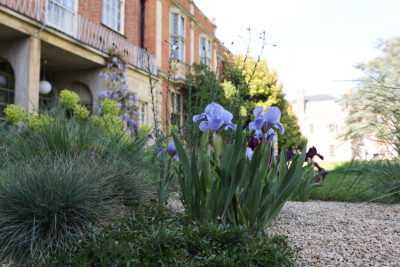
Iris x germanica Austrian Sky (dwarf variety)
But our largest and most impressive specimen (physically, if for no other reason) is surely the Iris x germanica. This stunning flower is now coming to the end of its display (they loved the dry weather and flowered sooner than expected), but we have some lovely images from when it was in its prime.
Before we come to the images of our various irises and their beautiful Latin names (always my favourite part), please allow us first to discuss Iris x germanica itself and the impact that it has had on history, science, culture and more (banking, religion, heraldry, feminism – the list goes on). The kaleidoscopic influence of this iris species really does show the importance that one plant can have not only botanically or environmentally, but to humans as a species throughout our evolution and growth. It has bequeathed a pattern of influence that endures and is added to by each generation which discovers it anew – somewhat like Somerville itself.
Originating in the Mediterranean, the iris was first documented by the Greek physician Pedanius Dioscorides in his work De materia medica, which was written between 50-70 CE. Iris x germanica, meanwhile, was first described by Linnaeus in his 1753 work Species Plantarum. The Iris x germanicathought to be a naturally arising hybrid of two other European species, I. pallida and possibly I. Florentina, Iris x germanica is also known as the bearded iris.
For centuries after its discovery by Dioscorides, irises were grown less for their aesthetic appeal than the many uses of their rhizomes. These rhizomatic uses changed over time. In the Middle Ages, iris rhizomes were used to create the pigments used in early medieval texts; ‘iris green’ was a common substitute for ‘bladder green’, and is one of the beautiful green colours you find in illuminated works.
Iris x germanica also has specific uses for its rhizomes, both medicinal and cosmetic. In many part of Europe, the rhizome of Iris x germanica was often used in teas for coughs, among other ailments (though, personally, I might be tempted to stick with over-the-counter syrups from your pharmacist, as they’re cheaper and less devastating to one’s garden!)
One of the more interesting and profitable reasons for growing this particular iris, for which it is still cultivated today, is Orris oil. A rather lovely substance produced from the dry rhizome, the oil is used in perfumes – though the five-year curing period means you’ll have to play a waiting game to get it! The plant is not grown for the flower, just the rhizome, so seeing orris oil production in Tuscany is a slightly underwhelming sight for iris lovers!
The oldest shop still growing, producing and selling orris oil is just outside Florence. It was once under the patronage of Catherine de Medici, the infamous aristocrat, trendsetter and mother of several kings of France. Hailing from the incredibly wealthy de Medici family, which was famous for its proficiency in banking but also had a reputation for their use of cosmetics and enlightened toilette (times were much smellier then), Catherine popularised the use of the scent in high society. It is also thought that she developed her own private wealth via its production.
From here we can take a detour into the world of heraldry, via Catherine and her coat of arms on marrying Henry II of France. The fleur de lis, although originally considered to be a lily, is now often argued to have been based on the bearded iris. And, indeed, why wouldn’t you want to capture for posterity something so beautiful and fleeting?
Leaving behind medicine, fashion and heraldry, let us turn to the main reason why we, and so many others, love Iris x germanica – that is, for its beauty.
The iris’ beauty is such that is has been the subject for many artists over several hundred years. Some of the most famous to feature the iris in their work are Van Gogh, Ogata Corin and the iconic series of works by Georgia O’Keefe. Please do search them out, to indulge your aesthetic senses.
As a thing of beauty, the iris is also iconic in the “British Garden” – so much so that the heritage collection bred by Sir Cedric Morris (the Benton Series), once thought lost, is now being sought out and gradually reassembled by the horticultural community. The holder, curator and verifier of this collection is Sarah Cook, an amazing gardener, previously from Sissinghurst, the famous gardens created by Vita Sackville-West.
If there are any iris fanciers out there, do have a look at the plant heritage website to connect. The Sarah Cook Plant Heritage Link might allow you to discover a Cedric Morris iris hidden away at the back of your garden.
And now, finally, let us turn to Somerville’s own bearded irises. Listed by border, along with a selection of images for illustration purposes.
Rockery
Iris x germanica Austrian Sky (dwarf variety)
Iris x germanica Cherry Road (dwarf variety)
Darbyshire Quad
Iris x germanica Sultan’s Palace
Iris confuse
Maitland building border
Iris unguicularis
Iris x germanica Benton Deidre (Sir Cederic Morris breed)
Iris x germanica Benton Olive (Sir Cederic Morris breed)
Double Borders (Chapel and Croquet)
Iris x germanica Sable
Iris x germanica Blue Rhythm
Iris x germanica Benton Caramel (Sir Cedric Morris breed)
Iris pseucoacorus
Flora Anderson Hall border
Iris x germanica Benton Olive (Sir Cedric Morris breed)
Iris x germanica Benton Susan (Sir Cedric Morris breed)
Pond Irises
Iris ensata
Iris Louisiana ‘Black Gamecock’
For those with an interest in growing them, the best advice we can give you is position in full sun.
